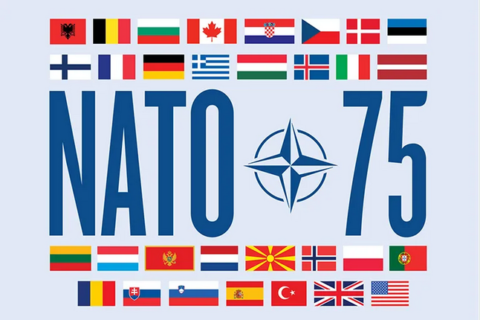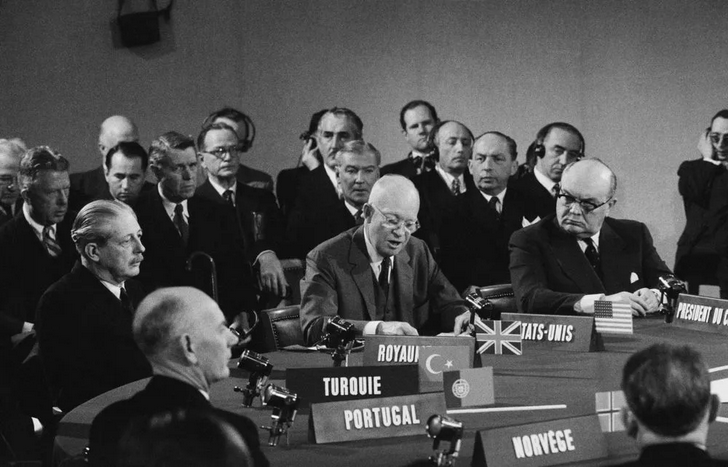Big Serge considers where NATO came from, where it is now, and where it might be going:
NATO, in its original conception, was designed to resolve a very particular security dilemma in Western Europe. In the immediate wake of World War Two, Western Europe — specifically Britain and France — had to consider how it might be possible to mount a defense against the colossal Soviet forces that were now conveniently forward deployed in Central Germany. The 1948 “Western Union Defense Organization” (WUDO), which included the aforementioned Anglo-French allies along with the Netherlands and Belgium, was created with an eye to this problem. With the rapid demobilization of American armies in Europe, however, it was obvious that this threadbare European alliance had dismal prospects in the unthinkable event of war with the Soviet Union. Field Marshal Bernard Montgomery, the supreme commander of WUDO forces, was asked what the Soviets would it would take for the Red Army to attack and push through all the way to the Atlantic, and famously replied: “Shoes”.
NATO, therefore, was an attempt to resolve the total strategic overmatch on the European continent through two expedients. The first of these, obviously was America’s membership, which brought both formal American security commitments as well as permanent American military deployments in Europe. The second strategic boost provided by NATO concerned Germany. Even after being ravaged by war and dismembered by the allied occupation, Western Germany remained the most populous and potentially powerful state in Western Europe. From the beginning, it was clear (particularly to the Americans and the British) that any sustainable strategy for deterring or fighting the Red Army would have to make use of German manpower — but this implied, axiomatically, that West Germany would have to be economically rehabilitated and rearmed. The prospect of *intentionally* rearming Germany was immensely upsetting to the French, for obvious reasons given the events of 1940-44. [NR: And 1914-18, and especially, 1870-71.]
NATO thus solved two major obstacles to a sustainable and viable defense of Western Europe, in that it formally and permanently tied the United States into the European defense architecture, and it provided a mechanism to rearm West Germany without allowing for the possibility of a truly autonomous and revanchist German foreign policy.
In many ways, NATO can be seen as a total reversal of the Versailles system which had doomed Europe after the First World War by guaranteeing the Second. The interwar period saw the Anglo-French alliance pitted against an adversarial Germany without American assistance; NATO ensured American commitment to European defense and rehabilitated Germany into a valuable partner — providing the command architecture to rearm Germany and mobilize German resources without allowing Germany to conduct an independent foreign policy.
Thus, the popular formulation, coined by the first General Secretary of NATO, Lord Hastings Ismay, that NATO existed to “keep the Americans in, the Russians out, and the Germans down”. This statement, however, has frequently been misinterpreted. The idea of “keeping the Americans in” was not a plot by Washington to dominate the continent, but a contrivance by the Europeans to keep America engaged in their defense. As for “keeping the Germans down”, this is pithily stated but not entirely accurate — the entire point of adding West Germany to NATO was to allow it to rebuild and rearm in the interests of collective western defense. For the United States, NATO made sense as a way to mobilize European resources and calcify the “front” in Europe, in the context of a broader geopolitical struggle with the USSR.
This is what NATO was for. It was a mechanism for formalizing an American security commitment in Europe and mobilizing German resources to deter the USSR, and it worked — the frontline of the Cold War in Europe remained static up until the collapse of the Soviet Union due to the naïve and self-destructive political visions of one Mikhail Gorbachev.
But what is NATO for now? What purpose does it serve in the context of a broader American grand strategy? More to the point, does such a grand strategy exist, and is it coherent? These are questions worth asking.





